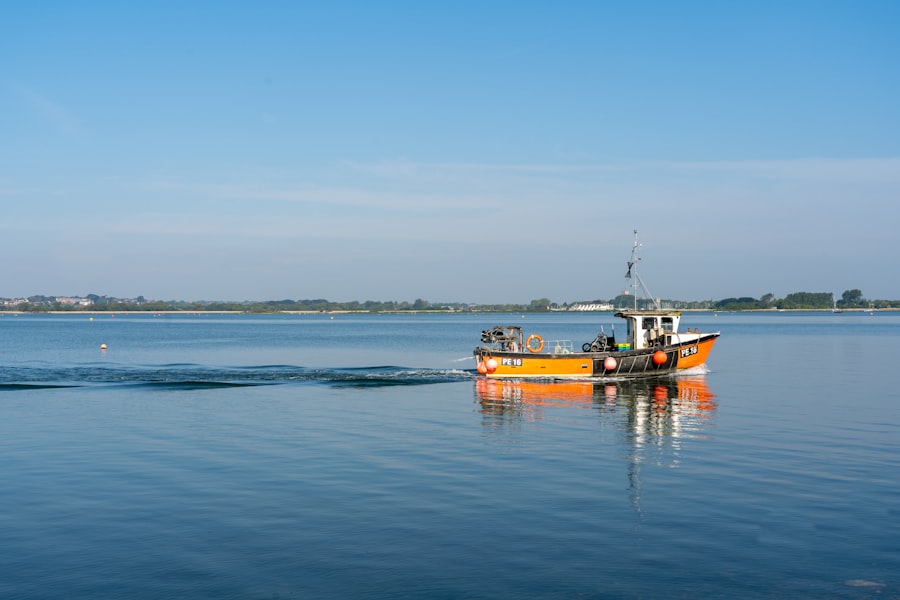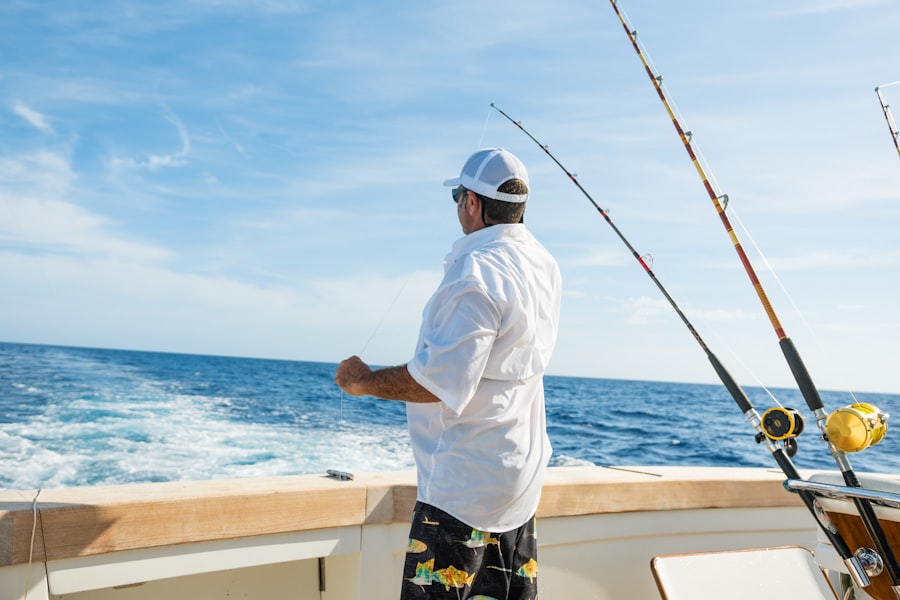Download links
How to install Aceph Ocean Fishing: The Ultimate Adventure APK?
1. Tap the downloaded Aceph Ocean Fishing: The Ultimate Adventure APK file.
2. Touch install.
3. Follow the steps on the screen.
Description
Deep sea fishing is an exhilarating pursuit that draws anglers from all walks of life, offering a unique blend of adventure, challenge, and the promise of a bountiful catch. The thrill begins the moment one sets foot on a boat, leaving the familiar shoreline behind and venturing into the vast, open waters. The anticipation builds as the boat cuts through the waves, with the salty breeze invigorating the senses and the horizon stretching endlessly ahead.
This experience is not merely about fishing; it is about immersing oneself in nature’s grandeur, where the ocean’s depths hold secrets and surprises waiting to be discovered. The excitement of deep sea fishing is amplified by the unpredictability of the ocean. Unlike freshwater fishing, where conditions can be more controlled, the ocean presents a dynamic environment influenced by tides, currents, and weather patterns.
Each trip can yield different results, making every outing a new adventure. Anglers often find themselves battling powerful fish species that put their skills to the test, creating a sense of accomplishment when they finally reel in a prized catch. The adrenaline rush that accompanies these battles is unmatched, as the struggle between man and fish unfolds against the backdrop of stunning seascapes and marine life.
Key Takeaways
- Deep sea fishing offers an exhilarating experience for fishing enthusiasts
- Aceph Ocean is one of the best locations for deep sea fishing with its rich marine life
- Use the right techniques and tips such as using live bait and understanding the tides for successful ocean fishing
- Common catches in Aceph Ocean fishing include tuna, marlin, and swordfish
- Essential gear and equipment for ocean fishing include rods, reels, lines, and safety gear
- Conservation and sustainability efforts are crucial for preserving the ocean’s delicate ecosystem and ensuring the future of ocean fishing
The Best Locations for Aceph Ocean Fishing
The Gulf Stream: A Fishing Hotspot
The Gulf Stream is renowned for its warm waters, which attract a wide range of fish species. The convergence of warm and cold currents creates an ideal habitat for game fish like marlin, tuna, and mahi-mahi. The area’s breathtaking scenery, featuring dramatic cliffs and vibrant marine ecosystems, is an added bonus for anglers. Many charter services operate in the region, catering to eager fishermen and solidifying the Gulf Stream’s reputation as a fishing hotspot.
The Continental Shelf: A Haven for Marine Life
The continental shelf is another notable location for Aceph ocean fishing, where deep waters meet shallower regions. This area is teeming with life, as nutrients from the ocean floor rise to support a rich food chain. Species such as snapper, grouper, and amberjack are commonly found here, making it a favorite among anglers seeking both sport and sustenance. The varied topography of the continental shelf, including underwater canyons and reefs, provides excellent structure for fish to hide and hunt, enhancing the chances of a successful catch.
Guided Trips for Maximum Success
Many fishing charters offer guided trips to these productive areas, ensuring that anglers can maximize their time on the water.
Tips and Techniques for Successful Ocean Fishing

To increase the likelihood of a successful ocean fishing trip, anglers should employ specific tips and techniques tailored to the unique challenges of deep sea fishing. One essential strategy is to understand the behavior of target species. For instance, many pelagic fish are known to feed at specific times of day or during particular tidal conditions.
By researching these patterns and planning trips accordingly, anglers can significantly improve their chances of encountering active fish. Additionally, using live bait can be particularly effective in attracting larger species that may be less responsive to artificial lures. Another crucial technique involves mastering various fishing methods suited for deep sea environments.
Trolling is a popular approach that involves dragging lures or bait behind a moving boat at varying speeds. This method allows anglers to cover large areas of water and locate schools of fish more efficiently. On the other hand, bottom fishing targets species that dwell near the ocean floor, requiring specialized gear such as heavy weights and sturdy rods to withstand the rigors of deep water.
Understanding when to switch between these techniques based on conditions can make all the difference in achieving a successful outing.
The Most Common Catches in Aceph Ocean Fishing
| Fish Species | Percentage of Catches |
|---|---|
| Tuna | 25% |
| Salmon | 20% |
| Snapper | 15% |
| Halibut | 10% |
| Mackerel | 10% |
Aceph ocean fishing offers a diverse array of catches that appeal to anglers with varying preferences and skill levels. Among the most sought-after species are tuna, particularly yellowfin and bluefin varieties. These fish are renowned for their speed and strength, providing an exhilarating challenge for those lucky enough to hook one.
Yellowfin tuna are often found in schools and are known for their delicious meat, making them a prized catch both for sport and culinary purposes. Another common catch in Aceph waters is the mahi-mahi, also known as dolphinfish. Recognizable by their vibrant colors and acrobatic leaps when hooked, mahi-mahi are not only fun to catch but also highly regarded for their taste.
They tend to inhabit warmer waters and are often found near floating debris or weed lines, where they seek shelter and food. Anglers frequently target these fish during summer months when they are most abundant, making them a staple in many fishing trips.
The Gear and Equipment You Need for Ocean Fishing
Equipping oneself with the right gear is paramount for a successful ocean fishing experience. A sturdy rod and reel combination designed for saltwater use is essential; these tools must withstand harsh marine conditions while providing the necessary strength to handle larger fish species. Many anglers opt for conventional reels or spinning reels with high gear ratios to facilitate quick retrievals during intense battles with powerful fish.
In addition to rods and reels, selecting appropriate tackle is crucial. Terminal tackle such as hooks, weights, and swivels should be corrosion-resistant to endure exposure to saltwater. Anglers often carry a variety of hooks in different sizes to accommodate various bait types and target species.
Furthermore, investing in quality fishing line—preferably braided or fluorocarbon—can enhance sensitivity and strength while minimizing visibility underwater. A well-stocked tackle box with an assortment of lures, jigs, and bait will ensure that anglers are prepared for any situation they may encounter on their fishing adventures.
Conservation and Sustainability in Ocean Fishing

Threats to Marine Ecosystems
Overfishing poses a significant threat to marine ecosystems, leading to declines in fish populations and disrupting the delicate balance of ocean life.
Responsible Fishing Practices
One effective approach is adhering to catch-and-release practices for certain species that are overfished or vulnerable. By carefully handling fish caught during outings and returning them unharmed to the water, anglers can contribute to population recovery efforts while still enjoying the thrill of fishing. Additionally, staying informed about local regulations regarding size limits and seasonal closures helps ensure that fishing activities do not negatively impact marine resources.
Supporting Sustainable Fishing Initiatives
Moreover, supporting sustainable fishing initiatives can make a significant difference in preserving ocean ecosystems for future generations. Many fisheries now implement management practices aimed at maintaining healthy fish stocks while promoting responsible angling practices among recreational fishermen. By choosing to fish in areas that prioritize sustainability and participating in conservation programs, anglers can play an active role in protecting the oceans they cherish while continuing to experience the excitement of deep sea fishing.
If you’re interested in learning more about ocean fishing, be sure to check out the article “Candy Camera: Foto Editor Varia Segun El Dispositivo.” This article discusses how different devices can affect the editing capabilities of the popular photo editing app Candy Camera. It’s a fascinating read for anyone looking to enhance their fishing photos taken out on the open sea.
FAQs
What is aceph Ocean fishing?
aceph Ocean fishing refers to the activity of fishing in the open ocean, typically far from the shore. This type of fishing often involves targeting larger species of fish such as tuna, marlin, and swordfish.
What are the common methods used in aceph Ocean fishing?
Common methods used in aceph Ocean fishing include trolling, deep sea fishing, and offshore fishing. Trolling involves trailing baited lines behind a moving boat, while deep sea fishing involves dropping lines or nets to great depths. Offshore fishing involves targeting fish species that inhabit the deeper waters of the ocean.
What are the popular locations for aceph Ocean fishing?
Popular locations for aceph Ocean fishing include the Gulf of Mexico, the Caribbean Sea, the Pacific Ocean, and the Atlantic Ocean. These areas are known for their abundance of large fish species and offer a variety of fishing opportunities for anglers.
What types of fish can be caught in aceph Ocean fishing?
In aceph Ocean fishing, anglers can catch a wide variety of fish species including tuna, marlin, swordfish, mahi-mahi, wahoo, and various species of sharks. These fish are known for their size and fighting abilities, making them popular targets for offshore anglers.
What equipment is typically used in aceph Ocean fishing?
Common equipment used in aceph Ocean fishing includes heavy-duty fishing rods and reels, strong fishing lines, and a variety of lures and baits. Additionally, anglers may use specialized gear such as downriggers, outriggers, and fighting chairs to help them land large fish in the open ocean.





